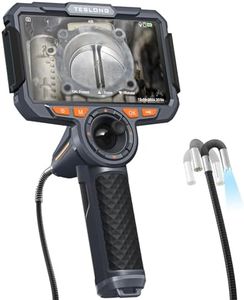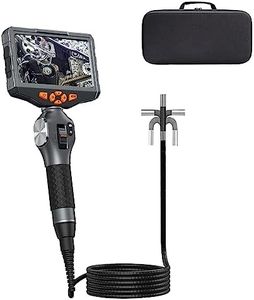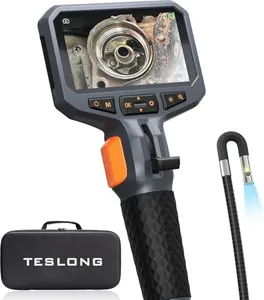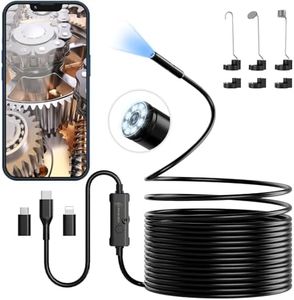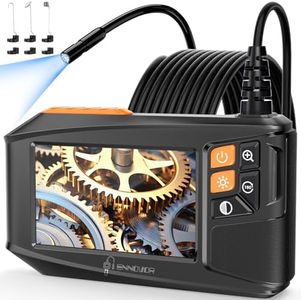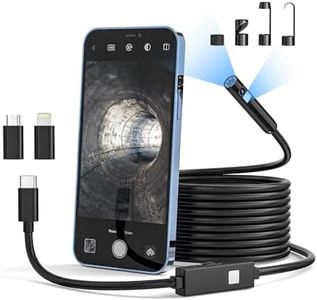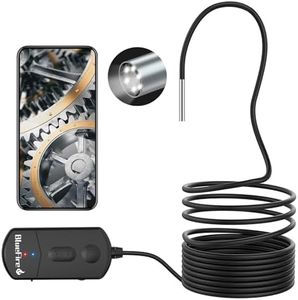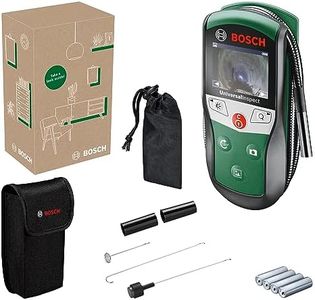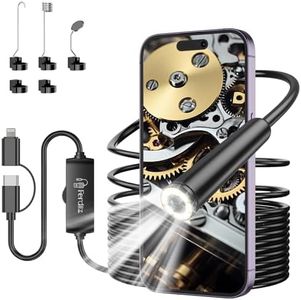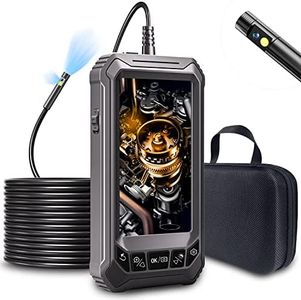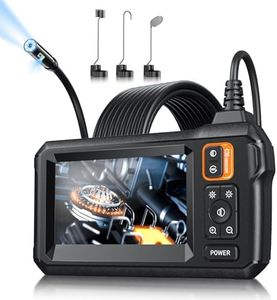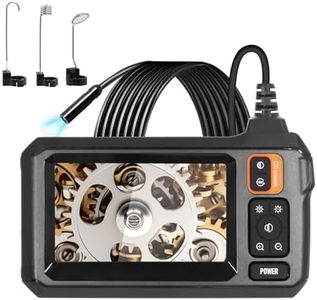We Use CookiesWe use cookies to enhance the security, performance,
functionality and for analytical and promotional activities. By continuing to browse this site you
are agreeing to our privacy policy
10 Best Borescopes
From leading brands and best sellers available on the web.Buying Guide for the Best Borescopes
When choosing a borescope, you’re looking for a tool that allows you to see inside tight, hard-to-reach places, like pipes, engines, or walls. Picking the right borescope requires thinking about how you’ll use it—whether for automotive repair, plumbing, home inspection, or another application. You’ll want to focus on the main features that affect how much detail you can see, how easy it is to maneuver, and how comfortable it is to use. Understanding the main specifications helps you choose a borescope that’s just right for your needs and avoids overpaying for features you don't need.Probe LengthThe probe length is how long the flexible shaft is, which determines how deep or far you can reach into spaces. If you only need to look into shallow places, a short probe (usually under 1 meter) is easy to handle and store. For looking into deeper or harder-to-reach areas, like inside walls or long pipes, you’ll need a longer probe (1-5 meters or even more). Pick a length that matches your typical inspection needs—too long can be unwieldy, too short can limit your access.
Probe DiameterProbe diameter refers to how thick the actual camera shaft is. A smaller diameter lets you get into narrower spaces, while larger diameters might be more robust but can't fit into as tiny gaps. Diameters below 5 millimeters are for really tight spots, while 5-10 millimeters work for most household and automotive jobs. Always check what size opening you need to get through, and pick the smallest diameter that will let you see what you need.
Image ResolutionImage resolution describes how clear the camera’s picture will be. Basic borescopes might offer resolutions like 640x480, providing enough detail for some tasks, while 720p or 1080p gives a much sharper and more detailed view. If you need to inspect fine details, like checking for cracks or corrosion, go for higher resolution. For simple inspections or just checking for blockages, lower resolution may be sufficient and sometimes makes for faster, smoother video.
Light Source (LEDs)Most borescopes include LED lights near the camera to illuminate dark spaces. The number and brightness of these LEDs matter because many places you’ll inspect are hard to see without good lighting. Some models offer adjustable brightness, which helps avoid glare or overexposure. If you’re working in very dark or deep areas, more and brighter LEDs are generally better, but for shallow or well-lit inspections, a basic light setup is usually enough.
Display TypeSome borescopes have built-in displays, while others rely on connecting to your smartphone, tablet, or computer. Built-in displays make the unit self-contained and easy to use anywhere, while smartphone systems are more portable, often less expensive, but might be trickier to set up. Your choice depends on whether you want a stand-alone device or are comfortable using extra devices to view what the camera sees.
Camera ArticulationArticulation means the camera tip can turn or bend, giving you the ability to look around corners or see different angles inside a space. Non-articulating cameras show just what’s in front of them, while articulated ones give greater inspection flexibility. Articulated tips can be controlled in one or more directions, which is useful for detailed inspections or maneuvering in tricky areas. If you only need to see straight ahead, a fixed camera is simpler and cheaper; for more complex jobs, articulation makes a big difference.
Waterproof RatingBorescopes are often used in areas exposed to water or moisture, so waterproofing is important. Ratings like IP67 mean the probe can handle being submerged briefly, while lower ratings are just splash-proof. If you plan to inspect pipes, engines, or any damp environment, make sure your borescope has an adequate waterproof rating for protection.
Recording CapabilitySome borescopes can record video or take pictures, which is helpful if you need to share what you see with others or keep records for later review. Recording options may include built-in storage, removable memory cards, or saving files directly to a connected device. If documentation is important for your work or hobby, look for this feature; if you only need live viewing, it's less critical.
